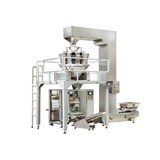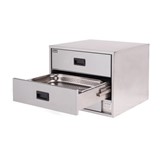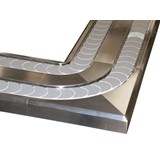Safety and compliance are paramount in any commercial kitchen setting. With the hustle and bustle of a busy kitchen, it is crucial to implement rigorous safety measures to protect both employees and customers. Additionally, adhering to industry regulations ensures that the establishment operates within legal boundaries and maintains a positive reputation.
In this comprehensive article, we will explore the key aspects of safety and compliance in commercial kitchens, focusing on operational precautions, ventilation requirements, electrical safety, staff training, health and safety regulations, and emergency protocols. By understanding and implementing these crucial elements, restaurant owners and kitchen operators can create a secure and compliant environment that fosters productivity and success.
1. Operational Safety Precautions
Operational safety precautions are of paramount importance in any commercial kitchen setting. These measures prioritize the well-being of kitchen staff and customers alike, reducing the risk of accidents and ensuring a safe and hazard-free environment. By implementing safety protocols, providing proper training, and adhering to legal compliance, commercial kitchens can create a secure and productive workspace. Employee safety is enhanced, leading to increased focus and efficiency in kitchen operations.
Moreover, customers are assured of safe and high-quality meals, enhancing the establishment's reputation and fostering loyalty. A safety-conscious approach not only prevents legal issues and penalties but also ensures business continuity and stability. Overall, operational safety precautions play a crucial role in the success and longevity of commercial kitchen settings, promoting a positive work culture and safeguarding the interests of all stakeholders involved.
Let's delve into some key operational safety precautions:
- Personal Protective Equipment (PPE): Providing appropriate PPE, such as cut-resistant gloves, non-slip shoes, and aprons, is essential to protect kitchen staff from potential hazards.
- Safe Handling of Knives and Utensils: Proper knife handling techniques, including how to store, clean, and use knives, should be emphasized to prevent cuts and injuries.
- Slip and Trip Prevention: Implementing non-slip flooring, using floor mats, and promptly cleaning up spills are essential to prevent slip-and-fall accidents in the kitchen.
- Fire Safety: Installing fire extinguishers and ensuring that all staff are trained in their usage is crucial to respond promptly to potential fires.
- Proper Lifting Techniques: Training kitchen staff in proper lifting techniques helps prevent musculoskeletal injuries when handling heavy pots, pans, and boxes.
- Equipment Maintenance: Regularly inspecting and maintaining kitchen equipment, such as stoves, combi ovens, and fryers, helps identify and address potential safety hazards.
- Safe Chemical Handling: Providing appropriate storage for cleaning chemicals and training staff in safe handling practices prevents accidental exposure and chemical-related injuries.
- Sanitation and Hygiene: Strict adherence to sanitation and hygiene standards helps prevent foodborne illnesses and ensures a safe working environment.
- Emergency Exits and Evacuation Plans: Clearly marking emergency exits and conducting regular evacuation drills are critical for swift and orderly responses in case of emergencies.


Find the right Commercial Combi Oven
Compare quotes from expert Australian suppliers and make the best choice. It's free, quick and easy!
2. Ventilation and Exhaust Requirements:
Proper ventilation and exhaust systems are essential in commercial kitchen settings for several compelling reasons.
These systems play a critical role in maintaining a safe, comfortable, and efficient environment for both kitchen staff and customers. Effective ventilation removes heat, steam, grease, and odors, providing a cooler and more pleasant workspace. It also eliminates harmful gases and fumes, safeguarding the health of employees. Moreover, ventilation hoods equipped with fire suppression systems contribute to fire safety, quickly detecting and suppressing grease fires.
Additionally, these systems promote energy efficiency, lowering utility costs, and ensuring regulatory compliance. Complying with ventilation and exhaust requirements is not only a legal obligation but also crucial for maintaining the establishment's operating license and reputation. Overall, investing in proper ventilation and exhaust solutions benefits both the well-being of employees and the overall success of the establishment.
Here are key points to consider:
- Ventilation Hood Systems: Installing effective ventilation hood systems over cooking areas, such as stoves, grills, and fryers, is crucial to capture and remove heat, smoke, grease, and steam.
- Makeup Air Units: Providing makeup air units ensures that the air removed by ventilation hoods is replaced, preventing negative pressure in the kitchen and maintaining a comfortable environment.
- Exhaust Fan Maintenance: Regular maintenance of exhaust fans, including cleaning and inspecting for any malfunctions, is essential to ensure their optimal performance.
- Ductwork Cleaning: Regular cleaning of ductwork prevents the buildup of grease and debris, reducing the risk of fire hazards and maintaining efficient ventilation.
- Fire Suppression Systems: Installing fire suppression systems in ventilation hoods is a critical safety measure, as they can quickly suppress grease fires and prevent their spread.
- Carbon Monoxide Detection: Integrating carbon monoxide detectors in the kitchen helps monitor air quality and promptly alerts staff to potential hazards.
- Adherence to Local Codes and Regulations: Understanding and complying with local building codes and health department regulations regarding ventilation is essential for avoiding penalties and ensuring a safe kitchen environment.
3. Electrical Safety Measures:
Commercial kitchens rely heavily on electrical appliances and equipment, making electrical safety a top priority. Electricity-related accidents can be catastrophic, but implementing proper safety measures can significantly mitigate risks.
Here are some key electrical safety measures to consider:
- GFCI Outlets: Ground Fault Circuit Interrupter (GFCI) outlets should be installed near water sources to quickly shut off power in case of electrical leaks or faults.
- Regular Electrical Inspections: Periodic inspections of electrical systems and wiring by qualified professionals help identify potential hazards and prevent electrical fires.
- Proper Wiring and Overloading Prevention: Ensuring proper wiring and avoiding overloading electrical circuits reduces the risk of electrical failures and fire incidents.
- Safe Handling of Electrical Appliances: Staff should be trained in the safe handling of electrical appliances, including unplugging them by gripping the plug, not the cord.
- Cord Management: Keeping cords away from heat sources and walkways prevents tripping hazards and damage to electrical cords.
- Training on Electrical Emergencies: Staff should be trained on how to respond to electrical emergencies, including how to safely shut off power in case of electrical fires or accidents.
- Electrical Panel Access: Ensuring easy and unobstructed access to electrical panels facilitates quick responses during emergencies and maintenance work.
4. Training Staff for Proper Oven Usage:
Commercial ovens are fundamental components of any kitchen, and improper usage can lead to accidents, damaged equipment, and compromised food quality.
Proper training is essential for all staff members who interact with ovens. Here are some key training aspects for proper oven usage:
- Understanding Oven Types: Training staff to recognize the different types of ovens (convection ovens, combi ovens, deck ovens, etc.) and their specific functionalities helps optimize cooking processes.
- Temperature and Timer Management: Teaching staff how to set and adjust oven temperatures and timers accurately ensures consistent and properly cooked dishes.
- Proper Loading and Unloading: Training kitchen staff in the safe loading and unloading of oven racks prevents burns and injuries.
- Avoiding Oven Overcrowding: Instructing staff to avoid overcrowding ovens ensures even cooking and proper air circulation.
- Recognizing Signs of Oven Malfunctions: Staff should be educated on how to recognize and report signs of oven malfunctions or irregularities to avoid potential hazards.
- Cleaning and Maintenance: Proper cleaning and maintenance of ovens not only extend their lifespan but also prevent fire hazards and ensure optimal performance.
Handling Hot Surfaces and Equipment: Staff should be trained in the safe handling of hot oven surfaces, trays, and utensils to prevent burns and injuries.


Find the right Commercial Combi Oven
Compare quotes from expert Australian suppliers and make the best choice. It's free, quick and easy!
5. Complying with Health and Safety Regulations:
Compliance with health and safety regulations is of utmost importance in any commercial kitchen setting.
These regulations are in place to protect the well-being of kitchen staff, customers, and the general public, as well as to maintain the integrity and reputation of the establishment. Several key reasons highlight the significance of adhering to health and safety regulations:
- Protecting Employee Health and Safety: Health and safety regulations set guidelines for safe working conditions, including the proper use of equipment, handling of hazardous materials, and the prevention of workplace accidents. Compliance with these regulations safeguards kitchen staff from injuries, illnesses, and other health hazards that can arise from the high-pressure and fast-paced environment of a commercial kitchen.
- Ensuring Food Safety and Quality: Health and safety regulations in commercial kitchens include strict guidelines for food handling, storage, and hygiene practices. Complying with these regulations ensures that food is prepared and served in a safe and sanitary manner, reducing the risk of foodborne illnesses and maintaining high-quality standards.
- Mitigating Legal and Financial Risks: Non-compliance with health and safety regulations can lead to severe legal consequences, including fines, penalties, and even the closure of the establishment. By adhering to these regulations, commercial kitchens can avoid potential legal liabilities and protect themselves from financial losses.
- Upholding Reputation and Customer Trust: A commitment to health and safety compliance fosters customer trust and confidence. Patrons are more likely to choose a restaurant that prioritizes their safety and well-being. On the other hand, negative incidents resulting from non-compliance can tarnish the establishment's reputation, leading to a loss of customers and damaging the business's standing in the community.
- Boosting Employee Morale and Productivity: A safe and compliant workplace promotes a positive work culture and boosts employee morale. When staff members feel valued and protected, they are more motivated, productive, and likely to stay loyal to the establishment.
- Demonstrating Professionalism and Responsibility: Compliance with health and safety regulations showcases the establishment's professionalism and commitment to responsible business practices. It demonstrates that the management takes the well-being of its employees and customers seriously and operates with integrity.
- Meeting Industry Standards and Best Practices: Health and safety regulations often align with industry best practices, which are designed to optimize efficiency and safety in commercial kitchens. By complying with these standards, establishments can operate at peak performance while prioritizing the welfare of their workforce and customers.
Compliance with health and safety regulations is not optional but a legal obligation for any commercial kitchen. Non-compliance can result in severe consequences, including fines, closure, or damage to reputation.
Here are some key aspects to consider for compliance:
- Food Safety Regulations: Adhering to food safety regulations, such as proper food storage, temperature control, and hygiene practices, prevents foodborne illnesses and ensures safe dining experiences for customers.
- Fire Safety Codes: Complying with fire safety codes, including proper installation and maintenance of fire extinguishers, fire suppression systems, and emergency exits, helps prevent fire incidents and protects lives.
- Occupational Safety Laws: Understanding and adhering to occupational safety laws, such as providing PPE, offering proper training, and maintaining a safe working environment, safeguards kitchen staff from workplace hazards.
- Health Department Inspections: Regular inspections by health departments ensure that the kitchen meets all safety and hygiene standards set by local regulations.
- Documentation and Records: Maintaining detailed documentation and records of safety training, inspections, and maintenance activities is essential for demonstrating compliance during audits or inspections.
- Staff Education on Regulations: Educating staff about the importance of compliance with health and safety regulations fosters a culture of responsibility and diligence in maintaining a safe kitchen environment.
6. Emergency Protocols and Equipment:
Despite rigorous safety measures, emergencies can still occur in a commercial kitchen. Having well-defined emergency protocols and readily accessible safety equipment is crucial for swift and effective responses. Here are key points to consider:
- Emergency Response Team: Designating an emergency response team and providing them with proper training equips them to handle various emergency scenarios.
- Emergency Contact Information: Keeping a list of emergency contact numbers, such as fire departments and medical services, in a readily accessible location ensures quick communication during emergencies.
- First Aid Kits: Placing first aid kits in accessible locations allows for immediate treatment of minor injuries.
- Fire Extinguishers: Ensuring that fire extinguishers are distributed throughout the kitchen and regularly inspected promotes rapid response in case of fires.
- Fire Suppression Systems: Integrating fire suppression systems, such as fire blankets and automatic fire suppression hoods, enhances the kitchen's ability to handle grease fires and other cooking-related incidents.
- Evacuation Plans: Having clear evacuation plans and designated meeting points enables safe and orderly evacuation in emergencies.
- Fire Drills and Emergency Training: Conducting regular fire drills and emergency training prepares staff to respond effectively in high-pressure situations.
- Accident Reporting: Establishing a protocol for reporting accidents and incidents ensures that management is promptly informed and can take appropriate action.
In the high-energy environment of a commercial kitchen, safety and compliance are of utmost importance. By implementing operational safety precautions, ensuring proper ventilation and electrical safety measures, providing staff training, complying with health and safety regulations, and establishing emergency protocols and safety equipment, restaurant owners and kitchen operators create a secure and compliant environment for their staff and customers. Prioritizing safety not only protects against accidents and injuries but also enhances the reputation of the establishment and fosters a positive work culture. A well-managed and safety-conscious kitchen is the foundation of culinary success, ensuring the smooth operation and longevity of any commercial kitchen setting.




-160x160-state_article-rel-cat.png)

-160x160-state_article-rel-cat.png)


-160x160-state_article-rel-cat.png)
















